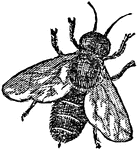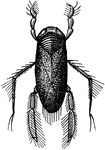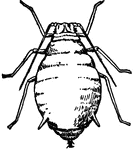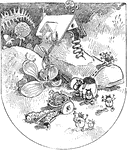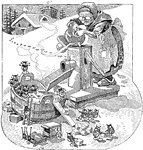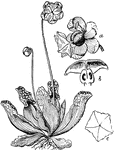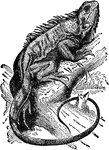
Iguana
"Iguana is a genus of saurian reptiles, natives of Brazil, Cayenne, the Bahamas, and neighboring localities…

Jacana
"The Jacana is a wading bird; a genus of grallatores. They are very light birds; and the wide surface…

Kinkajou
"Kinkajou is a genus of carnivorous mammals. They have prehensile tails, with which they hang on to…

Lizard
"Lizard is the popular name of numerous reptiles having usually two pairs of limbs and an elongated…
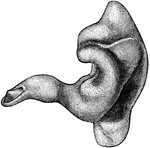
External auditory canal
"A Cast of the External Auditory Canal. The auditory canal is a passage in the solid potion of the temporal…
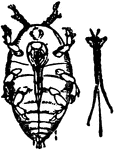
Phylloxera
"Pylloxera is a genus of insects allied to the Aphis and Coccus families. The Phylloxeridæ attach…
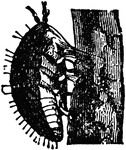
Phylloxera
"Pylloxera is a genus of insects allied to the Aphis and Coccus families. The Phylloxeridæ attach…
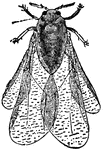
Phylloxera
"Pylloxera is a genus of insects allied to the Aphis and Coccus families. The Phylloxeridæ attach…

Turnip Sawfly
"Sawflies are a group of insects. The turnip fly and the gooseberry fly are examples."—(Charles…

Silkworm
"Silk is the peculiar glossy thread spun by the caterpillars or larvae of species of moths, and a well-known…

Spider Fly
"Spider Fly is a genus of dipterous insects, chiefly allied to the forest fly. The insects are parasitical…
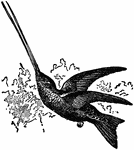
Swordbill
"Swordbill is a popular name for any individual of the humming bird genus, Docimastes. The bill which…
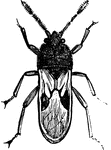
Chinch Bug
The popular name of certain fetid American hemipterous insects of the genus Blissus, somewhat resembling…

Ruby Tailed Fly
They are rich colored insects, very active in the hottest sunshine and capable of rolling themselves…

Archerfish
"Toxotes jaculator, a scaly-finned, acanthopterygian fish, about 6 in. long, inhabiting the seas around…
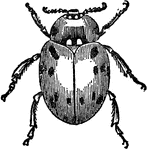
Ladybird
A class of small insects or beetles found commonly on plants and trees. They are noted for their various…

Locust
The name of several species of insects allied to grasshoppers and crickets. The term is applied conjointly…
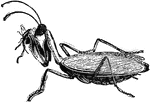
Mantis
A genus of locusts remarkable for their form. They are widely distributed in the United States and Eurasia.…

Moth
Lepidopterous insects, which are distinguished from butterflies in that the antennae taper to a point…

Insect
Diagram of the external structure of an insect. 1: The head carrying the eyes and antennae. 2: First…

Night Hawk
A bird found extensively in North America, belonging to the family of goatsuckers. It is a value for…

Redstart
A genus of American birds, which are native to a region extending from Canada to Bolivia. About a dozen…
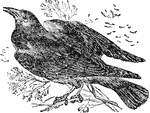
Rook
A species of crow. It differs from other birds of the crow family in having a naked spot at the base…

Scorpion
The name of an extensive genus of insects, native to the warm climates of both hemispheres, and belonging…
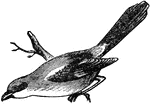
Shrike
A genus of birds of the insessorial family, and widely distributed in America, Eurasia, and other continents.…

Spider
An extensive division of insects, which includes the scorpions and mites. The spiders differ from most…

Termites
A class of insects confined chiefly to the tropics. They resemble in their mode of life the true ants,…

Wasp
A genus of insects somewhat resembling bees, but differing fromm them in having a more powerful sting,…
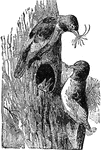
Woodpecker
A genus of birds belonging to the climbers, and so called from their habit of pecking into trees in…
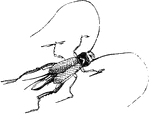
Cricket
Insects related to grasshoppers and katydids. They have somewhat flattened bodies and long antennae.

Cicada
The popular and generic name of certain insects belonging to the order Hemiptera, suborder Homopotera,…

Digger Wasp
A popular name for wasps that burrow in the ground, in which th lay their eggs, provisioning each cell…

Magnified Louse
"A genus of insects, the type of a very numerous family, which forms the order Parasita or Auoplura.…

Noctuina
"The Noctuina form an eceedingly large group of nocturnal moths, although even here there are a few…

Noctuina
"The Noctuina form an eceedingly large group of nocturnal moths, although even here there are a few…
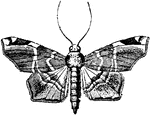
Pyralidina
"The Pyralidina are a group of small moths readily distinguished by their long slender bodies and large…
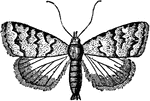
Pyralidina
"The Pyralidina are a group of small moths readily distinguished by their long slender bodies and large…
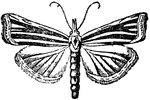
Pyralidina
"The Pyralidina are a group of small moths readily distinguished by their long slender bodies and large…

Pyralidina
"The Pyralidina are a group of small moths readily distinguished by their long slender bodies and large…
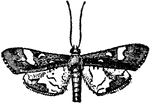
Pyralidina
"The Pyralidina are a group of small moths readily distinguished by their long slender bodies and large…
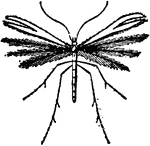
Plume Moth
"The insects of the group Pterophorina, are remarkable from the peculiar conformation of their wings.…

Plume Moth
"The insects of the group Pterophorina, are remarkable from the peculiar conformation of their wings.…

Goliath Beetle
The African goliath-beetles and the american elephant-beetles are the largest of all insects.
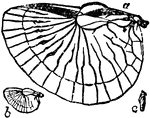
Earwig Wings
"A name arising in the first instance probably from their invariable habit of secreting themselves in…

Male Cockroach
"A genus of Orthopterous insects, having an oval or orbicular flattened body, the head hidden beneath…
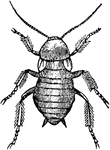
Female Cockroach
"A genus of Orthopterous insects, having an oval or orbicular flattened body, the head hidden beneath…



